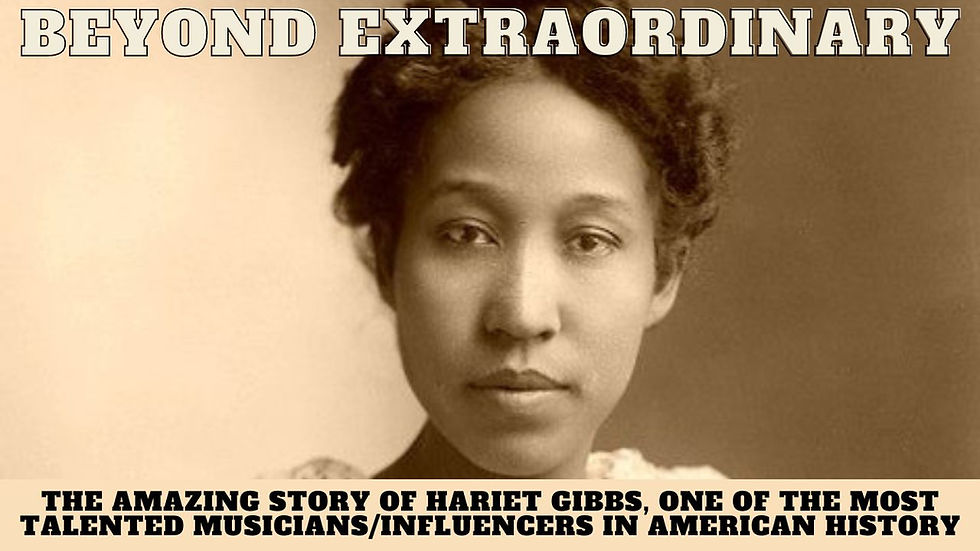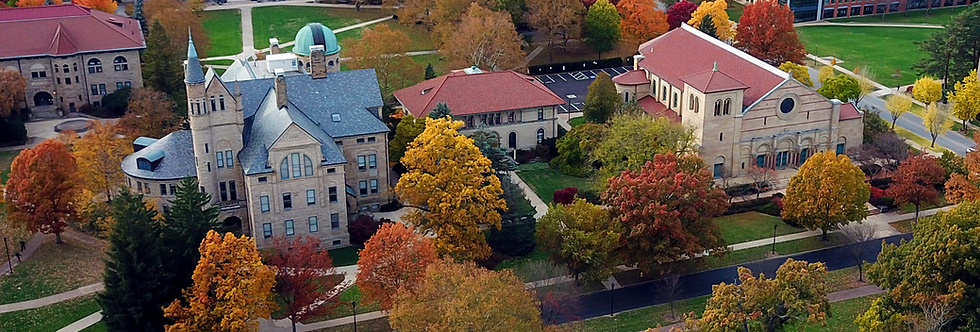Harriet Gibbs: Pioneer extraordinaire in music education
- TC Craig
- Feb 2, 2023
- 3 min read
An American History Special running throughout February

The beautiful woman pictured above was more than amazing, she was extraordinary. The definition of extraordinaire is pretty simple: extremely good or impressive. However, in the case of Harriet Gibbs, extraordinaire means "the best of the best; the pinnacle, the cream within the cream of the crop. The definition takes real meaning when you look at what little Gibbs had to work with and how much she gave with what she had. To be clear, she had talent and drive beyond words, and thus we willl do our best to introduce you to this American legend.

Harriet Gibbs was a pioneer in the world of African American music education. Gibbs was born in Victoria, British Columbia on February 18, 1868 to Mifflin Wistar Gibbs and Maria Ann (Alexander) Gibbs. In 1869 her family moved to Oberlin, Ohio. Marshall began her study of music at the age of nine and continued the pursuit at the Oberlin Conservatory of Music where she studied piano, pipe organ, and voice culture. Graduating in 1889, she was the first African American to complete the program and earn a Mus.B. degree, which at the time was Oberlin’s equivalent of a Bachelor of Music degree.

Marshall trained in Europe after graduating and in 1890 returned to the United States to found a music conservatory at the Eckstein-Norton University, an industrial school in Cane Springs, Kentucky. In 1894 Gibbs played at a recital in Little Rock, Arkansas before an integrated audience.

At the beginning of the 20th century, Marshall held the position of supervisor for the District of Columbia’s African American public schools, Divisions X-XIII, and served as the divisions’ director of music.
To provide African American students with advanced musical training within the conservatory structure, she founded the Washington Conservatory of Music in 1903. It was later renamed the Washington Conservatory of Music and School of Expression when the school expanded to include drama and speech. In establishing a school exclusively operated by African American musicians for the advancement of African American education, Marshall realized a lifelong goal.
Harriet Gibbs married Napoleon Bonaparte Marshall, a Massachusetts lawyer, in 1906. Together they promoted her conservatory, but his career would eventually draw her away from her work in music education for years at a time.


In 1922 she accompanied her husband to Haiti, where he was sent by President Warren G. Harding to be a part of the U.S. legation. President Harding spoke in favor of racial equality but yhe type of equality that Harding wanted was one that, ultimately, benefited his nation’s economy more than it did any community of people. In his speech, he repeatedly emphasized the individual, calling on each person to participate in society to the best of his or her ability, regardless of their race. But Harding still welcomed social separation between white and Black Americans, even claiming that Black Americans weren’t looking for social equality at all.
So Gibbs and her husband moved and worked in Haiti. They lived there for six years, during which time she founded the Jean Joseph Industrial School in Port-au-Prince and worked extensively with Haitian social welfare charities.
Presient Warren G. Harding

After Napoleon Marshall died in 1933, Harriet Marshall refocused her attention on the Washington Conservatory of Music and School of Expression. In 1937, as an expansion to the conservatory, she founded the National Negro Music Center as a resource to both promote creative work and to preserve traditional African American music. Marshall’s conservatory was a landmark in the history of black education.
The Center sponsored regular concerts for the black community, trained many prominent musical professionals and attracted the nation’s most talented musicians as teachers. It remained in operation until 1960.
Harriett Gibbs Marshall died on February 25, 1941 in Burrell’s Private Hospital in Washington, D.C. She was seventy-three years old.















































Comments